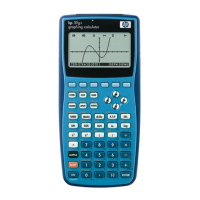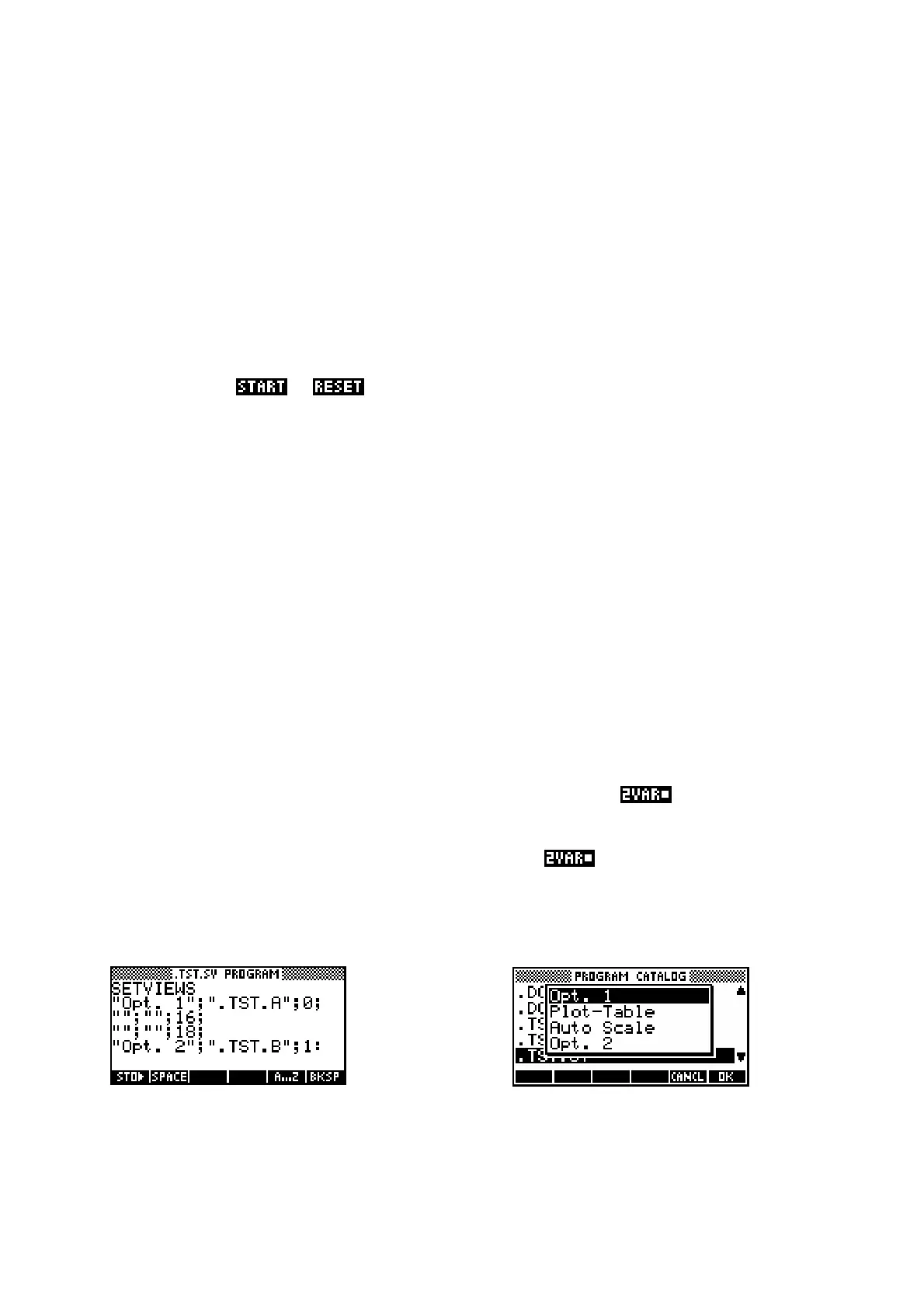216
The linking process performed by the SETVIEWS command (or by the ADK)
is also important in that it tells the calculator which programs are to be
transmitted with the aplet when it is copied via cable or infra-red link. Only
those programs named in the SETVIEWS command (or linked by the ADK)
will be transmitted.
Special entries in the
SETVIEWS
command
In addition to the lines which form the menu for your aplet, there are some
special entries which are treated differently.
i. If you include entries called “Start” or “Reset”, then the ‘helper’
programs associated with those entries will be run when the user
presses or in the APLET view.
ii. If you include a menu line entry which consists of a single space
character in double quotes, then the entry will not appear in the VIEWS
menu, but the program named in the line will be transmitted with the
aplet. This can be handy if you have a program which is a subroutine.
ie one which is not directly called in the menu but which is called by
another program which is in the menu.
Another example of this is the .NAME.SV program itself. It needs to be
included in the list in this fashion, since we don’t want it to appear on
the VIEWS menu but it is usually kept and transmitted with the aplet.
Strictly this is not necessary since, once it has done its job, it would
normally never need to be run again.
iii. If you include an entry which consists of empty double quotes, then
you can access the commands which appear on the parent aplet’s
normal VIEWS menu which has been replaced by yours. The standard
menu options of Auto Scale, Plot-Detail etc. can be included in this
way. View numbers 15 onwards are reserved for this purpose. For
example, if your parent aplet was the Statistics aplet in mode
and you wanted to include its Auto Scale command then you would
use a view number of 18 since Auto Scale is entry number 4 on the
normal VIEWS menu for the Statistics aplet in
mode. You need
to be quite careful when using this option since the commands like
Auto Scale appear in different positions for different parents.
Shown below is a SETVIEWS program which illustrates this…
producing a
menu of…

